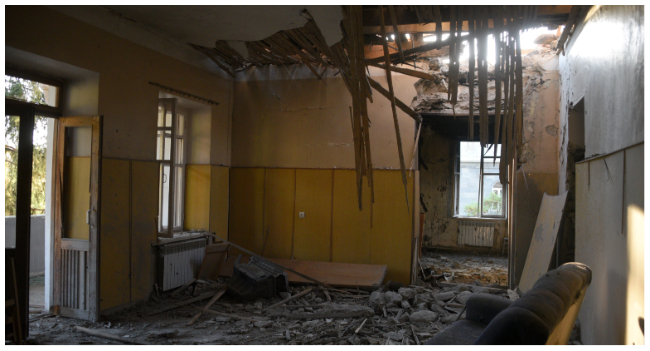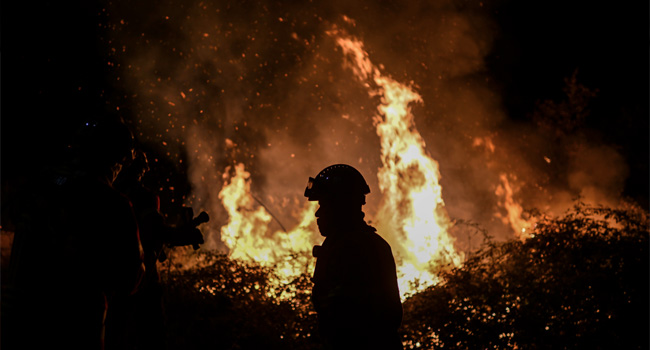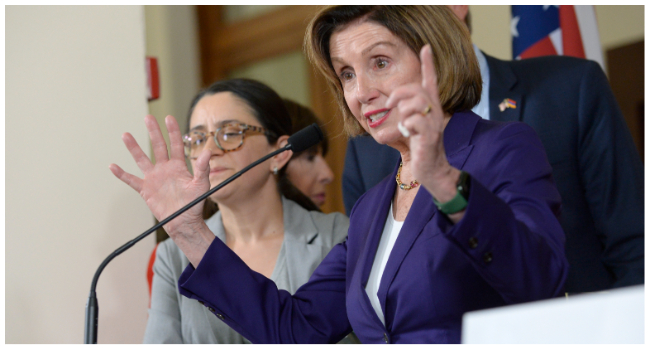Armenia said Friday that at least 136 people died in border clashes with Azerbaijan this week, bringing the overall toll to more than 200 following the countries’ worst fighting in two years.
Both sides accuse each other of provoking the clashes, which erupted on Tuesday and ended with international mediation overnight on Thursday.
The Caucasus neighbours have fought two wars — in 2020 and in the 1990s — over the contested Nagorno-Karabakh region, Azerbaijan’s Armenian-populated enclave.
Analysts say this week’s escalation has largely undone recent EU efforts to bring Baku and Yerevan closer to a peace agreement.
READ ALSO: Two Police Officers Stabbed In London Ahead Of Queen’s Funeral
“For the moment, the number of dead is 135,” Armenian Prime Minister Nikol Pashinyan told a cabinet meeting on Friday.
“Unfortunately, it is not the final figure. There are also many wounded.”
Armenia’s rights ombudsperson, Kristina Grigoryan, later said one civilian was also killed and six wounded in shelling by Azerbaijani forces.
“Azerbaijan targeted peaceful residents,” she said — a claim which Baku flatly denies.
‘International mediation’
Grigoryan said the clashes also forced hundreds of Armenian civilians to flee their homes.
Azerbaijan has reported 71 deaths among its troops.
It was the worst fighting since the two countries fought a six-week war in 2020 and comes with Armenia’s closest ally Moscow distracted by its nearly seven-month war in Ukraine.
Armenia’s security council said the violence ended late Thursday “thanks to international mediation” after earlier failed attempts by Moscow to broker a truce.
US House Speaker Nancy Pelosi is due to visit Yerevan over the weekend, Politico newspaper reported, citing sources familiar with the visit.
A delegation of the Collective Security Treaty Organisation (CSTO) — a Moscow-led grouping of ex-Soviet republics — arrived in Yerevan on Thursday evening, Armenia’s defence ministry said.
Armenia is a member of CSTO but Azerbaijan is not.
On Tuesday, Armenia’s security council asked for military help from Moscow, which is obliged under the treaty to defend Armenia in the event of a foreign invasion.
With Moscow increasingly isolated on the world stage following its February invasion of Ukraine, the European Union had taken a lead role in mediating the Armenia-Azerbaijan normalisation process.
Transport sticking point
During EU-mediated talks in Brussels in May and April, Azerbaijani President Ilham Aliyev and Pashinyan agreed to “advance discussions” on a future peace treaty.
They last met in Brussels on August 31, for talks mediated by the European Council President Charles Michel.
The talks also focus on border delimitation and the reopening of transport links.
The issue of ensuring a land transport link between Turkic-speaking Azerbaijan and its ally Ankara via Armenian territory has emerged as the primary sticking point.
Azerbaijan insists on Yerevan renouncing its jurisdiction over the land corridor that should pass along Armenia’s border with Iran — a demand the Armenian government rejects as an affront to the country’s sovereignty and territorial integrity.
The six weeks of fighting in 2020 claimed the lives of more than 6,500 troops from both sides and ended with a Russian-brokered ceasefire.
Under the deal, Armenia ceded swathes of territory it had controlled for decades, and Moscow deployed about 2,000 Russian peacekeepers to oversee the fragile truce.
Ethnic Armenian separatists in Nagorno-Karabakh broke away from Azerbaijan when the Soviet Union collapsed in 1991. The ensuing conflict claimed around 30,000 lives.





